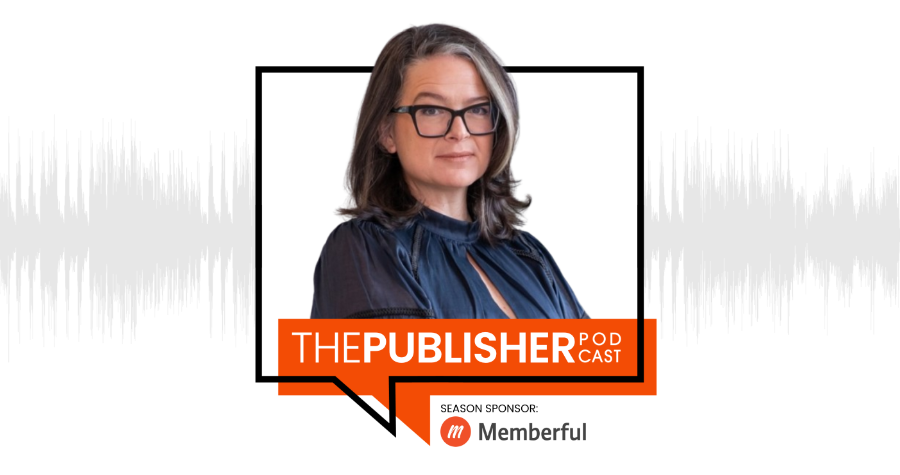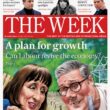Katie Vanneck-Smith joined the £120mn-revenue Hearst UK as CEO in December 2022 from Tortoise Media, the ‘slow news’ digital she had co-founded in 2018. Previously, she had been president of News Corp’s Dow Jones, where she led The Wall Street Journal’s successful online membership business, having earlier been involved in the pioneering membership schemes of the Times of London. In this extract from the Media Voices podcast**, in February this year, Vanneck-Smith discusses with Peter Houston her approach to memberships, now being rolled-out across the Hearst magazine portfolio.

What’s the difference between subscriptions and membership?
I think about subscriptions quite simply as a transactional relationship. You subscribe to something, it’s an ongoing payment that you set up, whereas membership doesn’t have to have payment at the heart of it. Being a member of something is a much more an emotional proposition: You belong. It’s not just the act of joining something. It’s that you probably have an emotional affinity to the club or the community that you are a member of, whether that’s from a golf club through to a membership of Good Housekeeping. There is a connexion with the community that you join.
I subscribe to get my washing-up liquid delivered to my house and I definitely don’t have an emotional relationship with the product. I simply subscribe because it’s easy, I make a saving and it’s convenient, whereas a membership is about that act of belonging or the joy of being part of something.
That’s why we have named each of our memberships in a different way, which reflects the community that we’’re trying to serve. So, it’s the Elle Collective, the Men’s Health Squad, and Good Housekeeping has got that VIP label, and we’ll launch the Runners World Club next month. Actually, all of the expressions of the magazine brands are very different depending on the brand because the customers and the audiences of those brands fundamentally value that brand for different things and they are different.”
Was Hearst UK late getting into memberships?
I think magazines, in general, were less disrupted by digital. So some of the headwinds that the news industry I grew up in dealt with in the early noughties, which meant that 2010 through to 2015, you saw that move towards digital subscriptions. Magazines were not seeing some of the disruption around convenience, because the digital ecosystem did disrupt the daily habits before it disrupted monthly passion habits, and social media developed later.
So I think if you’re comparing it to news, yes, magazines are late [at Hearst]. But if you’re taking magazines as their own part of the publishing and media ecosystem, I don’t think Hearst is particularly late. There had been a few attempts and tests. Even in Hearst we did Women’s and Men’s Health before I arrived. [Those are] quite a lot different now because we’ve taken the lessons of those early tests and developed better propositions over the last couple of years; Grazia at Bauer had a beauty proposition and Vogue had a test over here. But it wasn’t something that you felt the magazine industry had leaned into.
The magazine industry in general has got a lot of lessons it can take from what the book industry has done, and what the news industry has done. In many ways, being late to the party does actually mean you’ve got a lot of stuff that you can leapfrog so you can actually go a bit faster when you finally turn up and start joining in.
What’s a good membership offering?
We have got legacy businesses where people have been paying to have an ongoing relationship. We’ve had subscription businesses for a long time, and they’re a core part of the offering. So you don’t throw the baby out with the bath water. When we build our memberships, the formulas that we bring to bear is, we think about some of the behavioural economics that underpins good subscriptions. So always have three, always put them side by side, always explain the benefits of each product… Some of the formulas, because we have got this subscription heritage, do start from the three-tiered approach.
We don’t allow people to buy the print edition only, that’s always part of a bundle, because what you want to do with every good subscription business and membership proposition is, you want people to use more than one element of their entitlements. Everyone has a formula, ultimately. With Spotify, back in the day, it used to be two shares and a playlist, and you’d never churn. At the Wall Street Journal, it was two product and five stories within a certain time frame, and you knew they weren’t going to churn. Everyone can work out what the formula for customer engagement is – it’s different by brand and different by product, but all of those things are true.
Membership doesn’t necessarily mean that every form of membership has to be paid for. You could be a member of a Cosmopolitan club, for example, and that could be a data exchange in its basic format, and you can still belong to something.
Are magazines changing quickly now?
There’s definitely a sense to me that magazines have been thinking about extending runways of print rather than thinking about what are the products of the future for the audiences of the future. Like many publishing organisations, we get obsessed by format. Consumers don’t. Consumers engage with brands, and they engage with communities, and they engage with individuals who represent things they care about passionately. This print versus digital debate, for me, is really actually unhealthy and unhelpful because – to move at pace and to think about what we have to do – you have to think about the brand in an ecosystem, what Elle does and how Elle connects with its communities and how it builds a paid-for proposition that people would be happy to join. It will, of course, be different to what Good Housekeeping does and what Prima does.
Where does print fit into the future?
I love the way that Douglas McCabe, of Enders Analysis, talks about ‘artisanal print’. I think it’s a bit like quality news in newspapers. The quality titles have really carved out their future. They know, even if their model is donations in The Guardian or paid-for subscriptions in The Times of London, you can see that quality news has a defined future. I think about it as a Venn diagram, and where are the ways we’re closer to books and where are the ways that we’re closer to news, and where do we have to be completely different and what’s unique about a magazine? Not for every brand, but for a large majority of brands where they probably came from a monthly rather than a weekly heritage. I think it’s probably going to be harder for weekly magazines than it is for monthlies. But I think we are a lean-back experience, aligned to people’s passions, the things they care about, that emotional connexion that helps us build memberships.
** To hear the full Media Voices podcast interview, click here.



